#the flame trees of thika 1981
Explore tagged Tumblr posts
Photo
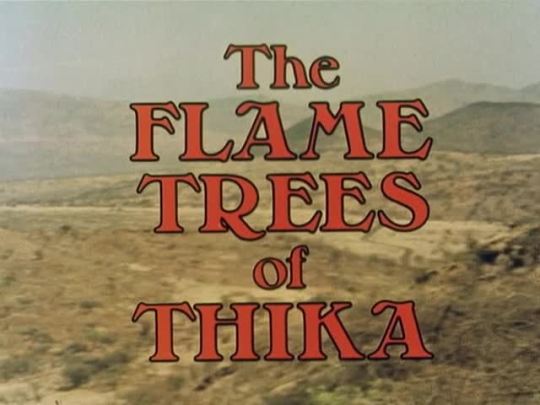
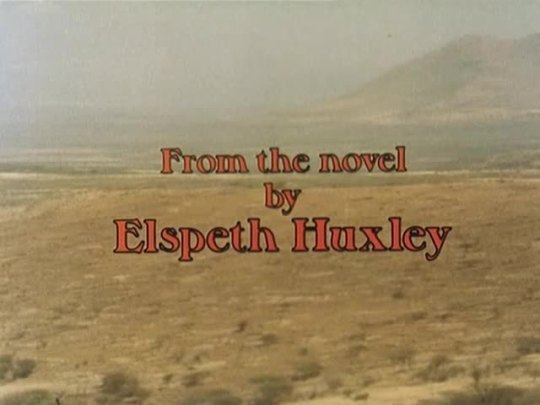


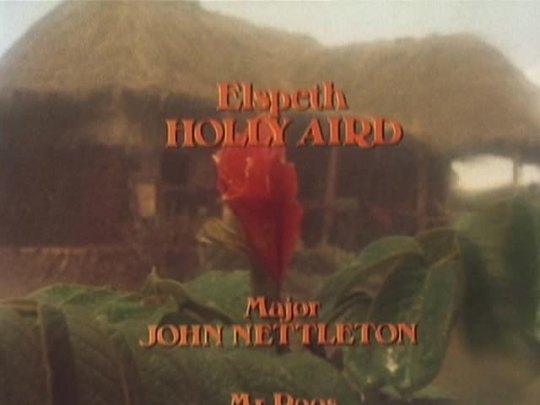
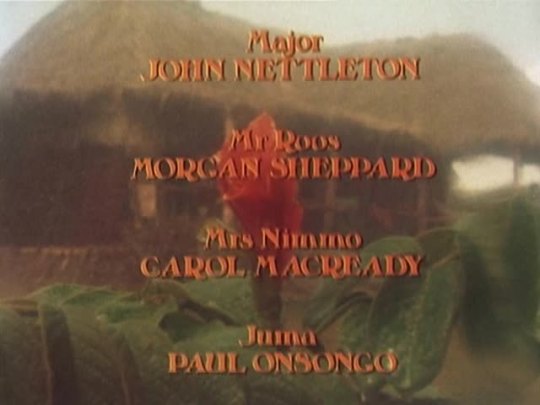
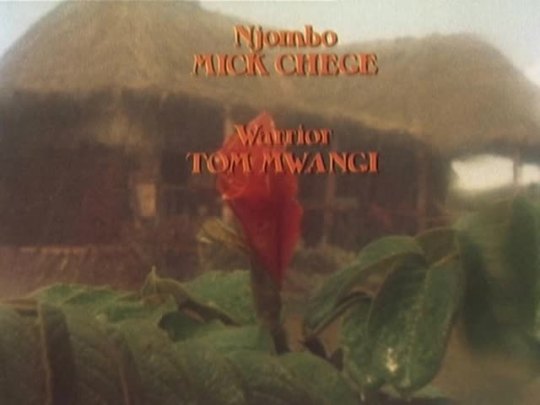
The Flame Trees of Thika - ITV - September 1, 1981 - October 13, 1981
Historical Drama (7 episodes)
Running Time: 50 minutes
Stars:
David Robb as Robin Grant
Hayley Mills as Tilly Grant
Holly Aird as Elspeth Grant
Nicholas Jones as Hereward Palmer
Sharon Maughan as Lettice Palmer
Morgan Sheppard as Piet Roos
Ben Cross as Ian Crawford
Mick Chege as Njombo
John Nettleton as Major
Carol MacReady as Mrs. Nimmo
Steve Mwenesi as Sammy
David Bradley as Alex Wilson
#The Flame Trees of Thika#TV#ITV#1980's#Historical Drama#David Robb#Hayley Mills#Holly Aird#Nicholas Jones#Sharon Maughan#Morgan Sheppard#Ben Cross#John Nettleton#Carol MacReady
5 notes
·
View notes
Text

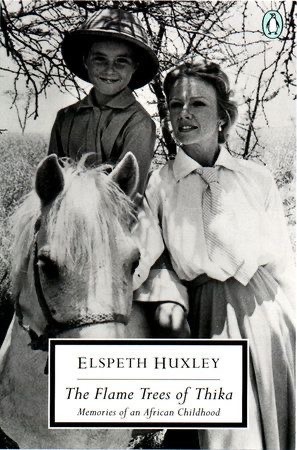
18 notes
·
View notes
Text
Hayley Mills: The “Every Girl” By Susan King
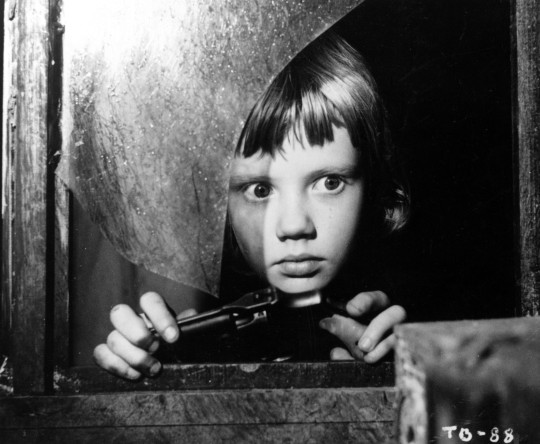
Hayley Mills wasn’t the typical child star. Unlike picture perfect Shirley Temple and Margaret O’Brien, the British actress was a bit of a scruff, a gangly, wild colt. Though cute, she certainly wasn’t adorable. But the daughter of Oscar-winning actor John Mills and author Mary Hayley Bell and baby sister of actress Juliet Mills definitely had the undefinable star quality. You couldn’t take your eyes off of her. And she had a naturalness and ease on screen. She was an “every girl.”
And that’s one of the reasons baby boomers fell madly in love with her in POLLYANNA (‘60), the first of six films she made for Walt Disney and for which she won the last Juvenile Oscar handed out by the Academy for her endearing turn as the eternally optimistic orphan who changes everyone’s lives. She just seemed like one of us. We all wanted to be her friend. And, as she got older, her young female fans wanted to be her; and boys wanted her to be their girlfriend. Even now, a smile lights across the faces of boomers whenever you mention her name.
In fact, when I recently posted on Facebook that I was watching her hit comedy THE TROUBLE WITH ANGELS (‘66) for the first time since it was released, people came out of the woodwork expressing their love for the movie and Mills, who is now 74.
Before she became POLLYANNA, Mills made her first credited film debut in J. Lee Thompson’s acclaimed black-and-white thriller TIGER BAY (‘59). She plays a tomboy named Gillie, who lives with her aunt in the poor and racially diverse Tiger Bay district of Cardiff. Gillie witnesses the murder of a woman in her apartment building by her young Polish sailor boyfriend (Horst Buchholz) in a moment of rage. Though she initially fears for her life when Buchholz tracks her down, these two lost souls end up developing a strong bond. Her father John Mills plays the police superintendent trying to find him and is thwarted every step of the way by Gillie, who lies constantly to keep the detective away until the young man leaves the country.
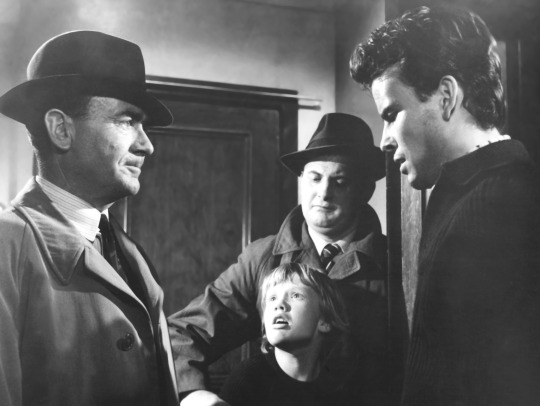
Again, she gives such a natural “coy”-free performance, you feel that Thompson had plucked a young ruffian off the streets of Tiger Bay to play Gillie. The first time I saw Mills on screen was in 1961 in one of her biggest hits for the Disney studio THE PARENT TRAP, a trippy comedy about twin sisters who meet at summer camp after their divorced parents (Maureen O’Hara and Brian Keith) had divvied them up as babies when the marriage ended. (One has to admit in this day and age, it’s more than a bit creepy and cruel that parents would do something like this.) The twins decide to play a trick on their parents, while plotting a way to get them back together, by switching places after summer camp.
Not only did the movie prove Mills could handle comedy with great aplomb, THE PARENT TRAP also turned Mills into a singing star. Not that she could really sing, but Richard and Robert Sherman penned Mills the catchy “Let’s Get Together” which became a hit tune.
Her next film for Disney IN SEARCH OF THE CASTAWAYS (‘62), an adventure based on a Jules Verne story, was the weakest of her Disney films. I’ve always had a soft spot in my heart for her follow-up movie SUMMER MAGIC (1963), a nostalgic comedy with the Sherman brothers once again supplying the songs. She was 17 when she made THE MOON-SPINNERS (‘64), a mystery thriller set in Crete based on a Mary Stewart best-seller. This time around, she is paired with the handsome British actor Peter McEnery as her love interest. Every girl in the audience also wanted McEnery as their love interest. Reviews were decidedly mixed, but Bosley Crowther in the New York Times stated the actress was growing up, noting “the ripening attractiveness” of Mills.
Mills ended her time with Disney with the blockbuster That Darn Cat! (‘65), an entertaining comedy about a mischievous Siamese cat named DC owned by Mills that ends up helping the FBI in solving a robbery and kidnapping. While she was under contract, Mills also made films in England including the lauded WHISTLE DOWN THE WIND (‘61) based on her mother’s 1959 novel of the same name. Directed by Bryan Forbes, the family film revolves around three farm children who find a bearded fugitive (Alan Bates) in their barn. Because he utters “Jesus Christ” when he is found, the three believe he really is Jesus. Mills received a BAFTA nomination for her charming performance.
Her first post-Disney film after GYPSY GIRL (’66) was the heavenly comedy THE TROUBLE WITH ANGELS (‘66) directed by Ida Lupino. I loved it when I first saw it and adored it when I revisited it recently. Mills and June Harding play the best of friends at a Catholic girls’ school and in between studying get into all sorts of trouble much to the chagrin of the Mother Superior (Rosalind Russell). Attending Catholic girls’ school for nine years, there’s little wonder TROUBLE WITH ANGELS is my favorite Mills film. TROUBLE WITH ANGELS also would be the last Mills film I would see in a movie theater.
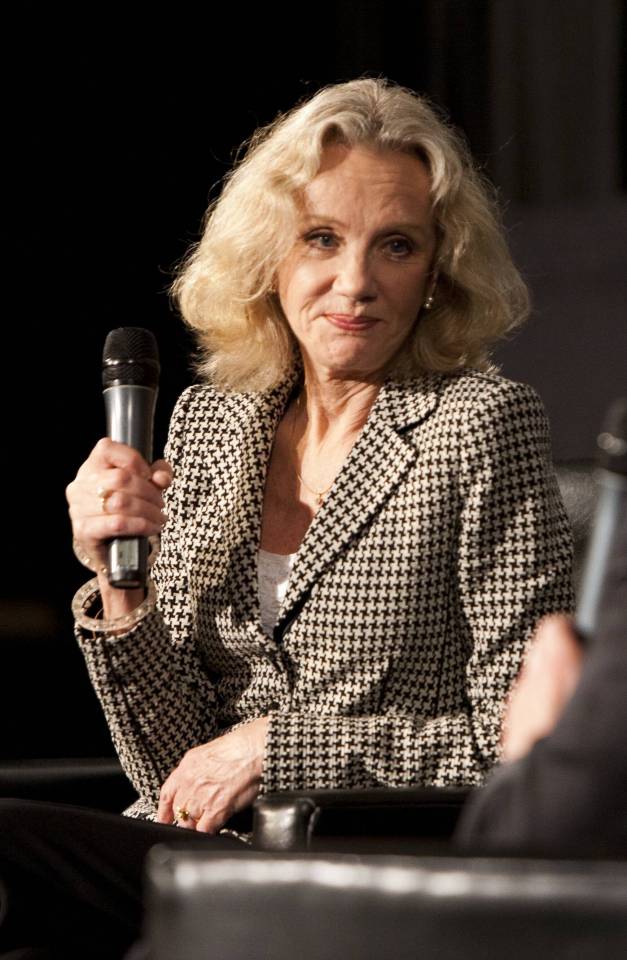
THE FAMILY WAY (‘66), was her first grown-up role and marked her first nude scene. Not only that, Mills created a scandal when she had a romance with the film’s director Roy Boulting, who not only had children, but he was nearly 33 years older than Mills. The two would marry for six years in the 1970s and a have son, Crispian. Most of her films during that time certainly weren’t for her young fans and frankly weren’t very good.
Mills took a six-year hiatus and returned in the acclaimed 1981 miniseries The Flame Trees of Thika which aired on PBS’s Masterpiece Theatre. She’s been going strong ever since, even touring Australia in the Rodgers and Hammerstein musical The King and I. Mills returned to the Disney fold doing several projects including the Disney Channel movie THE PARENT TRAP II (‘86), for which I got to interview her in person, and the Disney Channel film BACK HOME (‘89), for which I interviewed her for the Los Angeles Times.
I asked her—and yes, she was charming—in 1990 if it was different being a child star in Hollywood versus being one in England. “Quite different,” she noted. “As far as my own life was concerned going over to America was a most wonderful holiday. It was like going to Disneyland. America was a playground, and everything was larger than life. The sun was always shining, and the cars were always clean and shiny, and everyone said, ‘You’re welcome.’ It was rows and rows of comics, ice cream sundaes and endless channels on the TV. I was very well looked after. All I was expected to do was learn my lines and get on the set. Of course, when I came back to England I came back to reality and had to go to board school and behave myself!”
#Hayley Mills#Tiger Bay#Parent Trap#TCM#Turner Classic Movies#Pollyanna#TCMFF#child actor#Susan King
130 notes
·
View notes
Photo

HAYLEY MILLS
(Born 18 April 1946) The daughter of Sir John Mills and Mary Hayley Bell, and younger sister of actress Juliet Mills, Hayley began her acting career as a child in the British crime drama film "Tiger Bay" (1959). She appeared in six films for Walt Disney, including "Pollyanna" (1960) and her dual role as twins Susan and Sharon in the "The Parent Trap" (1961). Her performance in "Whistle Down the Wind" (a 1961 adaptation of the novel written by her mother) saw her nominated for a BAFTA Award. Since then she has continued to make films and TV appearances, including a starring role in the UK television mini-series "The Flame Trees of Thika" in 1981, the title role in Disney's television series "Good Morning, Miss Bliss" in 1988, and as Caroline in "Wild at Heart" (2007–2012) on ITV in the UK.
19 notes
·
View notes
Text
"THE FLAME TREES OF THIKA" (1981) Review
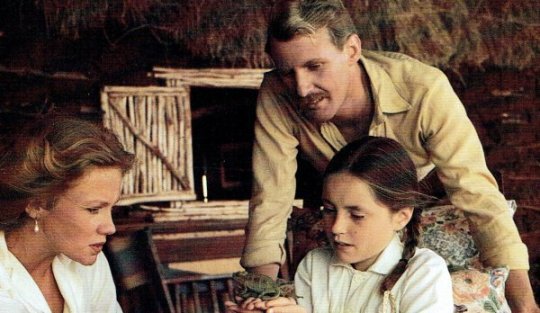
"THE FLAME TREES OF THIKA" (1981) Review Some might find this hard to believe, but I used to be an avid viewer of PBS's "MASTERPIECE THEATER" years ago. Even when I was a child. That is right. Even as a child, I was hooked on period dramas set in Great Britain's past. One of the productions that I never forgot happened to be one that is rarely, if ever, discussed by period drama fans today - namely the 1981 miniseries, "THE FLAME TREES OF THIKA".
"THE FLAME TREES OF THIKA" is really a biopic - an adaptation of author Elspeth Huxley's 1959 memoirs of her childhood in Kenya during the last year of the Edwardian Age . . . that last year before the outbreak of World War I. The story begins in 1913 when young Elspeth Grant and her mother Tilly arrive in British East Africa (now known as Kenya) to meet her father, Robin. The latter, who is a British Army veteran, has plans to establish a coffee plantation. The Grants encounter many problems in setting up their new home. With the help of a Boer big game hunter named Piet Roos, they hire a Kikuyu local named Njombo to serve as translator for any new workers. Two of those workers are another local of Masai/Kikuyu descent named Sammy, who serves as the Grants' headman; and a Swahili cook named Juma. As life begins to improve for the Grants, they acquire new neighbors, who include a recently arrived couple named Hereward and Lettice Palmer, a Scottish-born former nurse named Mrs. Nimmo, a young and inexperienced farmer named Alec Wilson and a very dashing big game hunter named Ian Crawford. However, just as the Grants were learning to adjust to life in British East Africa, World War I begins and they are forced to adjust to a new future all over again. Overall, "THE FLAME TREES OF THIKA" struck me as a pretty decent production. It is a beautiful series to look at, thanks to Ian Wilson's cinematography. He did a marvelous job in recapturing the space and scope of Kenya. Yes, the miniseries was filmed on location. My only qualm is that Wilson may have used slightly inferior film stock. The production's color seemed to have somewhat faded over the past twenty to thirty years. Roy Stannard's art direction greatly contributed to the miniseries' look. I can also say the same about Maggie Quigley's costume designs. They looked attractive when the scene or moment called for borderline glamour. But Quigley remained mindful of her characters' social standing, age and personalities. I feel that Stannard and Quigley, along with production managers Clifton Brandon and Johnny Goodman did a very good job in recapturing the look and feel of colonial pre-World War I East Africa. Let me clarify . . . colonial East Africa for middle-class Britons. I might as well be frank. Many years had passed between the first and last times I saw "THE FLAME TREES OF THIKA". It took this recent viewing for me to realize that the production's narrative was not as consistent as I had originally assumed it was. Let me put it another way . . . I found the narrative for "THE FLAME TREES OF THIKA" a bit episodic. I tried to think of a continuous story arc featured in the miniseries, but I could only think of one - namely the love affair between Lettice Palmer, the wife of the Grants' boorish neighbor; and big game hunter Ian Crawford. And this story arc only lasted between Episodes Three and Seven. Otherwise, the viewers experienced vignettes of the Grants' one year in East Africa. And each vignette only seemed to last one episode. I must admit that I found this slightly disappointing. There were some vignettes that enjoyed. I certainly enjoyed Episode One, which featured the Grants' arrival in East Africa and their efforts to recruit help from the locals to establish their farm. I also enjoyed those episodes that featured the Grants and the Palmers' efforts to kill a leopard; a major safari in which Tilly Grant, the Palmers and Ian Crawford participated in Episode Six; and the impact of World War I upon their lives in the miniseries' final episode. However, I had some problems with other episodes. I found Episode Two, which featured young Elspeth's rather strange New Year's experiences nearly boring. Nearly. I must admit that some of the characters featured in that particular episode struck me as rather interesting. The episode that featured a personal quarrel between the Grants' translator Njombo and their headman Sammy ended up pissing me off. It pissed me off because its resolution, namely an "Act of God" in the form Tilly, struck me as a typical example of European condescension . . . even in the early 1980s. The performances for "THE FLAME TREES OF THIKA" struck me as pretty first-rate. I rather enjoyed Hayley Mills and David Robb's performances as young Elspeth's parents, Tilly and Robin Grant. Although both actors came off as likable, they also did an excellent job in portraying Tilly and Robin's less than admirable qualities . . . including an insidious form of bigotry. What I am trying to say is . . . neither Tilly or Robin came off as overt bigots. But there were moments when their prejudices managed to creep out of the woodwork, thanks to Mills and Robb's subtle performances. Sharon Maughan and Nicholas Jones were also excellent as the Grants' neighbors, Lettice and Hereward Palmer. It was easier for me to like the delicate and ladylike Lettice, even though there were times when she came of as self-absorbed. Jones' Hereward struck me as somewhat friendly at first. But as the series progressed, the actor did a great job in exposing Hereward's more unpleasant nature, which culminated in the safari featured in Episode Six. Ben Cross gave a charming and slightly virile performance as big game hunter Ian Crawford. But if I must be honest, the character was not exactly one of his more complex and interesting roles. But the one performance that shined above the others came from the then twelve year-old Holly Aird, who portrayed Elspeth Grant, the miniseries' main character. Not only did Aird give a delightful performance, she also held her own with her much older cast mates. Quite an achievement for someone who was either eleven or twelve at the time. There were other performances in "THE FLAME TREES OF THIKA" that I found impressive. Carol MacReady was entertaining as the somewhat narrow-minded Mrs. Nimmo. Mick Chege gave a charming performance as the always cheerful and popular . David Bradley's portrayal of young neighbor Alec struck me as equally charming. Paul Onsongo gave a solid performance as the Grants' major domo/cook Juma. However, Onsongo's last scene proved to be very complex and interesting when Juma discovered that he could not accompany the Grants back to Britain. One of the series' most interesting performances came from William Morgan Sheppard, who portrayed Boer big game hunter, Piet Roos. The interesting aspect of Sheppard's performance is that although he conveyed Roos' more unpleasant and racist side in Episode One, he did an excellent in winning the audience's sympathy as his character dealt with the even more unpleasant Hereward Palmer during the leopard hunt in Episode Five. Another interesting performance came from Steve Mwenesi as the Grants' headsman, Sammy. Mwenesi did an excellent job in portraying the very complex Sammy. The latter seemed so cool and subtle. Yet, Mwenesi also made audiences aware of Sammy's emotions by utilizing facial expressions and his eyes. Overall, "THE FLAME TREES OF THIKA" was an entertaining production that gave audiences a peek into the lives of colonial Britons during the last year of peace before the outbreak of World War I. Realizing that the story deal with members of the British middle-class and the Kikuyu and Swahili locals, the production team ensured that the miniseries was rich in atmospheric details without over-glamorizing the setting and costumes. And although the miniseries' narrative came off as somewhat episodic, I also managed to enjoy the performances of a first-rate cast led by Hayley Mills, David Robb and an enchanting Holly Aird.
#the flame trees of thika#british empire#colonialsim#world war 1#elspeth huxley#hayley mills#david robb#steve mwenesi#w. morgan shepphard#paul onsongo#ben cross#edwardian age#carol mcready#british colonialism#sharon maughan#nicholas jones#mick chege#roy ward baker#period drama#period dramas#costume drama#the flame trees of thika 1981
2 notes
·
View notes
Text
“EMMA” (1996) Review

"EMMA" (1996) Review
There are times when I find it hard to believe I have seen at least four adaptation of Jane Austen's 1815 novel, "Emma", in the past year-and-a-half. Four adaptations. There have been a good deal more than four . . . but I have yet to see them. The last adaptation I saw turned out to be writer/director Douglas McGrath's 1996 film, which starred Gwyneth Paltrow.
Although the actress had been working for a few years, it was her performance as Emma Woodhouse that put her on the map to stardom. In fact, I would say that "EMMA" also proved to be a professional milestone for co-stars Jeremy Northam and Toni Collette."EMMA" turned out to be the second movie that featured both Paltrow and Collette as co-stars. And the movie also proved to be the directorial debut of Douglas McGrath. Was the movie worth the importance in the careers of the four mentioned? Perhaps.
I would never claim that "EMMA" was the best adaptation of Austen's 1815 novel. There were aspects of it that I found unappealing or troubling. McGrath's use of the Jane Fairfax character struck me as rather minimal. In fact, poor Polly Walker was barely able to speak more than five or six lines during her entire appearance in the movie. I got the feeling that the director/writer was not particularly interested in the character. And his limited use of poor Jane made me wonder why Emma would harbor any jealousy toward her in the first place. The characters of Isabella and John Knightley were barely used as well. I found this disappointing, since both have proved to be very interesting in other adaptations - especially the slightly rude John Knightley. Another problem I had with "EMMA" proved to be Ewan McGregor's portrayal of Frank Churchill. I do not if the problem was the actor or McGrath's writing. But the portrayal of the character seemed . . . off. Frank seemed more busy trying to hide his feelings for Jane, instead of forming any kind of connection to Emma. In other words, this movie did not do justice to the characters of Frank Churchill, Jane Fairfax, and the John Knightleys.
But despite these flaws, I must admit that "EMMA" turned out to be a very entertaining and first-rate movie. Personally, I believe that the movie's top-notch owned a great deal to McGrath's direction. The director shot "EMMA" with a steady pace that allowed the audience to enjoy the greater details of Austen's tale. This is really a well paced movie, despite the few nips and tuck McGrath inflicted into the story. "EMMA" could never bore me with a slow pacing. Yet, at the same time, it did not race by with the speed of a comet. Another aspect that contributed greatly to "EMMA" proved to be its comic timing. I honestly have to say that the 1996 film might be the funniest adaptation of Austen's novel. This was especially apparent in two particular scenes - the Westons' Christmas party, Emma and Mr. Knightley's conversation about Harriet Smith and Robert Martin, and a specific moment during the Coles' supper party that I cannot really explain with words.
There were changes to Austen's novel that many have protested against, but did not bother me one whit. Some have pointed out that Sophie Thompson had been too young in 1995-96 to portray the middle-aged Miss Bates. She was in her early 30s at the time. Even McGrath had initially rejected her for the role when she first auditioned. But once Thompson donned a pair of glasses that made her seem several years older. And the age range for middle-age is pretty uncertain - even to this day. One range stretches from the mid-30s to the mid-60s, in which Miss Bates would fit. Besides . . . Thompson's portrayal of the chatty Miss Bates is so deliciously funny that in the end, I am glad that McGrath had cast her in the role. Other changes include both Harriet Smith andEmma being rescued from the gypsies by Frank Churchill, the location of Emma's first meeting with Frank, and the convergence of both the strawberry picking and the Box Hill picnic into one outing.
Two of the bigger changes proved to be Harriet's reaction to Emma's engagement to Mr. Knightley and the circumstances that surrounded Emma's insult to Miss Bates. I found these last two changes somewhat of an improvement to Austen's story. I have always thought that Austen had glossed over Harriet's reaction to Emma and Mr. Knightley's engagement. After allowing Harriet to develop a crush over Donwell Abbey's master, Austen went out of her way to avoid or evade how Harriet might have reacted to the news. McGrath, on the other hand, approached the matter with a little more realism by allowing Harriet to react with tears. The other change featured Emma's insult to Miss Bates on Box Hill. In the novel and other versions, Emma's insult regarding Miss Bates' intelligence had been laced with humor. Emma's insult was tinged with malice in this version, due to her anger over the Eltons' cold reaction to Frank's regard for her. And instead of Jane Fairfax refusing to see Emma during the latter's visit to the Bates' home following the picnic, it was Miss Bates who refused to see her. Now many "purists" might have a problem with these changes. I did not. As far as I am concerned, these changes did not harm the story.
I can say this about "EMMA" . . . it proved to be one of the most beautiful looking Austen adaptations I have ever seen. I am not familiar with Ian Wilson's work, other than his photography for the 1981 miniseries, "THE FLAME TREES OF THIKA". And I have not laid eyes on that particular production in many years. I only hope that it looks as beautiful and lush as Wilson's photography in "EMMA". My God, I never thought that such lush and sharp colors could look so elegant. The look and style of Wilson's photography seemed to match Ruth Meyer's costume designs. The light elegance and pastel coloring featured in Meyer's costumes almost gave them an ethereal vision - especially those costumes for the female cast. Meyer had received criticism from those who claimed that her costumes did not accurately reflect the Regency decade or English fashion. I was too busy enjoying Meyer's costume designs to really care.
"EMMA" provided some first-rate performances from the cast. Well . . . let me rephrase that statement. From most of the cast. Poor Ewan McGregor was nearly defeated by McGrath's written portrayal of Frank Churchill and that damn wig he was forced to wear. The London Film Critics' Circle gave him the British Actor of the Year award. I am sorry, but I do believe he did not deserve this award. And he would be the first to agree with me, considering his past criticism of his performance. And poor Polly Walker was damn near wasted in her role as Jane Fairfax, due to McGrath's failure to give her any depth. And lines. There were times I felt that McGrath was more interested in Emma's reaction to Jane's "perfections" than in the character. But the rest of the cast fared just fine. Both Greta Scacchi and James Cosmo gave solid performances as Mrs. and Mr. Weston (Emma's former governess and Frank's father). I could say the same for Phyllida Law's silent portrayal of the defeated Mrs. Bates. Denys Hawthorne gave a charmingly humorous portrayal of Emma's father, Mr. Woodhouse. But I did not find his performance as memorable as some of the other actors who have portrayed the character. But there were performances that really knocked the wind out of me. Juliet Stevenson was hilarious as the verbose and vulgar Mrs. Augusta Elton. She was so perfect (and annoying) in the role that I found myself wishing someone would bash her over the head to stop her prattling. However, I could stand and listen to Sophie Thompson's prattling all day. I really enjoyed her portrayal as the equally verbose and pitiful verbose Miss Bates. I especially enjoyed her habit of loudly repeating a word or line in order for her silent mother to hear. Alan Cummings struck me as deliciously insidious as the fortune seeking Reverend Philip Elton. What I found amazing about his performance was his transformation from the slimy courtier to Mrs. Elton's henpecked and dominated husband.
The three performances that really caught my attention came from Gwyneth Paltrow, Jeremy Northam and Toni Collette. The latter gave one of the best comic performances I have ever seen in an Austen production. Her portrayal of the easily manipulated Harriet Smith reminded me of Debbie Bowen's portrayal in the 1972 miniseries. But I believe Collette injected more comic skill into the role. Although Jeremy Northam was slightly younger than the literary George Knightley, he easily conveyed the character's dignity and wisdom . . . and at the same time injected a great deal of wit and excellent comic timing into his performance. One of my favorite Northam moments turned out to be Knightley's silent reaction to Emma's duet with Frank Churchill at the Coles' party. Northam's Mr. Knightley looked as if he had found a worm in his salad and his expression had me shaking with laughter. Gwyneth Paltrow's portrayal of the well-meaning, yet snobbish Emma Woodhouse projected her into stardom. And I can see why. She not only gave one of the best performances in her early career, but I also believe that she proved to be the funniest Emma I have yet to see in any adaptation. Yet, at the same time, Paltrow did a great job in conveying Emma's more dramatic moments and character development.
Although I do not consider "EMMA" to be the best adaptation of Jane Austen's 1815 novel, I have to admit that Douglas McGrath both wrote and directed an excellent film. He was ably supported by Ian Wilson's beautiful photography, Ruth Meyer's gorgeous costumes and a first-rate cast led by the excellent Gwyneth Paltrow. McGrath's body of work may not have been that perfect, but I believe he can look back on his work for "EMMA" with great pride.

#emma#emma 1996#jane austen#douglas mcgrath#gwyneth paltrow#jeremy northam#toni collette#Polly Walker#Ewan McGregor#greta scacchi#alan cummings#juliet stevenson#sophie thompson#phyllida law#denys hawthorne#james cosmo#emma woodhouse
17 notes
·
View notes
Text
#Hayley #Mills #Biography #Photos #Wallpapers #eyeshadow #funny #lifestyle #makeupblogger #melanin #pic #red #selfie #song #women
Born Hayley Catherine Rose Vivien Mills in London in 19four6, she is the daughter of the wonderful actor Sir John Mills and the well-known novelist-playwright Mary Hayley Bell. Her sister is the actress Juliet Mills. She grew up in her parents’ home, an outgoing, funny child, and, since she spent so much time with her parents and their friends, very intelligent. When she went to boarding school at age nine, however, she became very shy around kids her own age. She identified solace in theater productions at her school. She was noticed playing at her parent’s home in 1958 by director J. Lee Thompson, who immediately cast her opposite her father in the thriller Tiger Bay (1959). Her debut performance turned heads around the world, from Gerseveral, where she won an award at the Berlin Film Festival, to Hollywood, when Walt Disney came knocking at her door. He signed her to a five-year contract. For her very first film for the studio, Pollyanna (1960), she won critical raves, box-office success, and a special Juvenile Academy Award. Her second Disney film, The Parent Trap (1961), in which she played twins, was even a lot more popular. She continued to search in routine Disney films like In Search of the Castaways (1962) and Summer Magic (1963), as well as films outside the studio like Whistle Down the Wind (1961), based on her mother’s novel, and The Chalk Garden (1964), again co-starring with her father. Though Disney gave her a somewhat more adult role in the mystery film The Moon-Spinners (1964), she had begun to tire of her sunny, innocent Pollyanna image. After completing That Darn Cat! (1965), she left the studio for good. That Darn Cat! (1965) was still a success, as was her first post-Disney film, Columbia’s The Trouble with Angels (1966). Then, she shocked her fans by appearing in the comedy The Family Way (1966) with her father. There was an even bigger surprise in store when she fell in love with the film’s director, Roy Boulting, who was 33 years her senior. She lived with Boulting for five years after he divorced his wife. They married in 1971 and had a son, Crispian Mills, in 1973. By this time, he’d taken control of her career, and, as a result, she made many bad film choices that left critics and audiences cold. By 1976, her film career had pretty much tanked. She divorced Boulting that year and moved in with actor Leigh Lawson, with whom she had a son, Jason. They separated in 1984. She appeared in three TV-movie sequels to The Parent Trap (1961) in the late 1980’s, and also appeared in the BBC miniseries “The Flame Trees of Thika” (1981) (mini) and the TV series “Good Morning, Miss Bliss” (1987), later re-titled “Saved by the Bell” (1989). She hasn’t done much film work in several years, preferring to concentrate on her burgeoning career in theater. Her best success in theater, so far, has been the role of Anna in “The King and I”, which she has played in many touring phase productions throughout the 1990’s.
Name Hayley Mills Height 5' 4″ Naionality British Date of Birth 18 April 1946, Place of Birth London, England, UK Famous for
The post Hayley Mills Biography Photos Wallpapers appeared first on Beautiful Women.
source http://topbeautifulwomen.com/hayley-mills-biography-photos-wallpapers/
1 note
·
View note